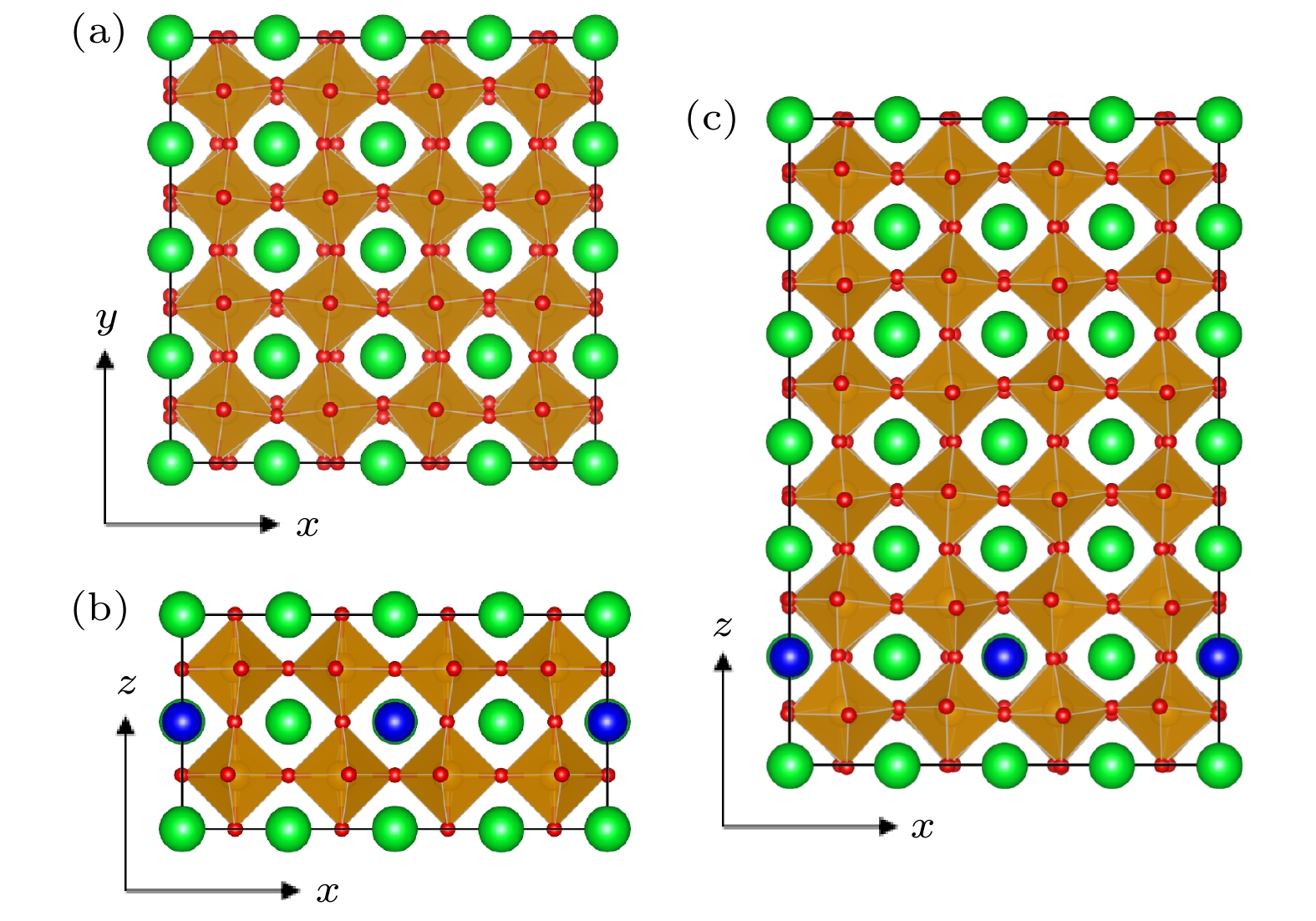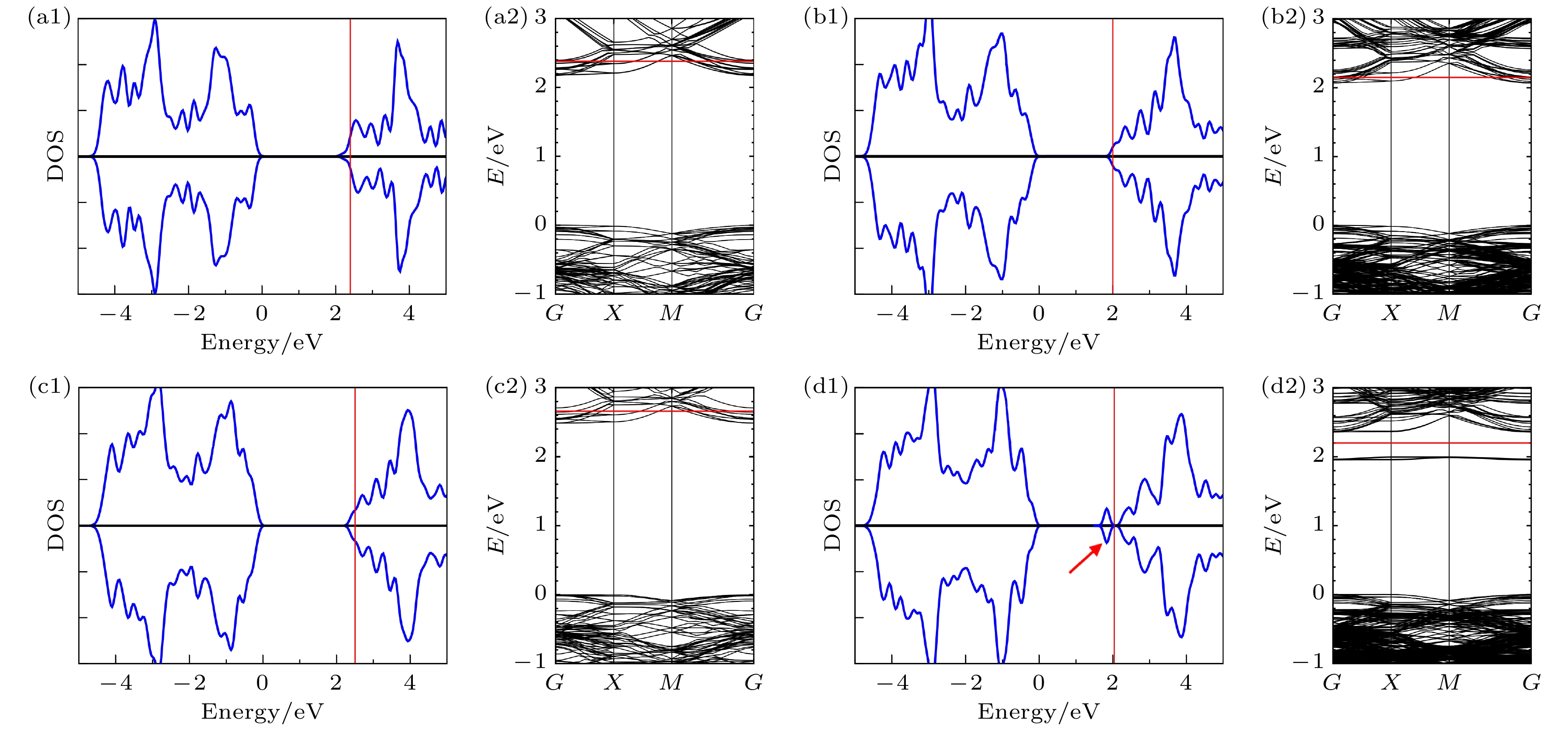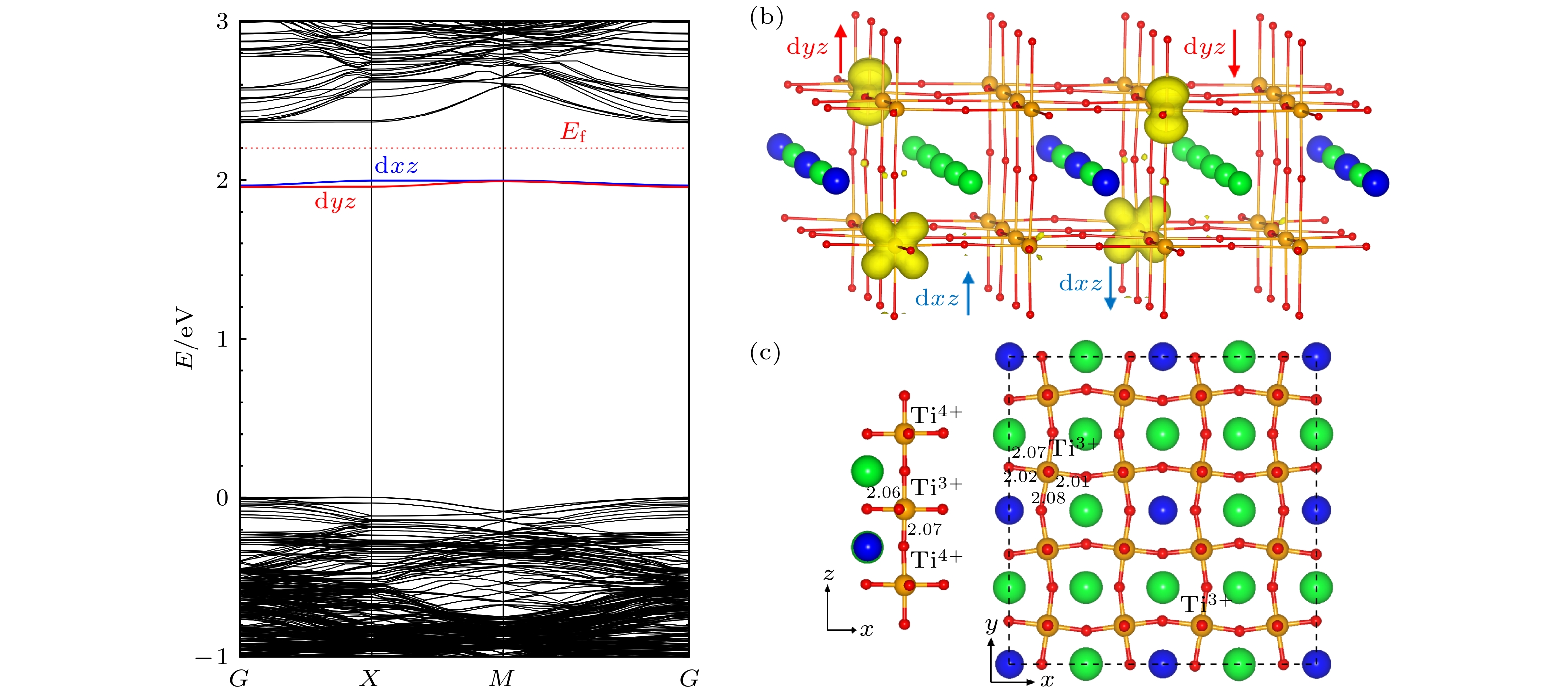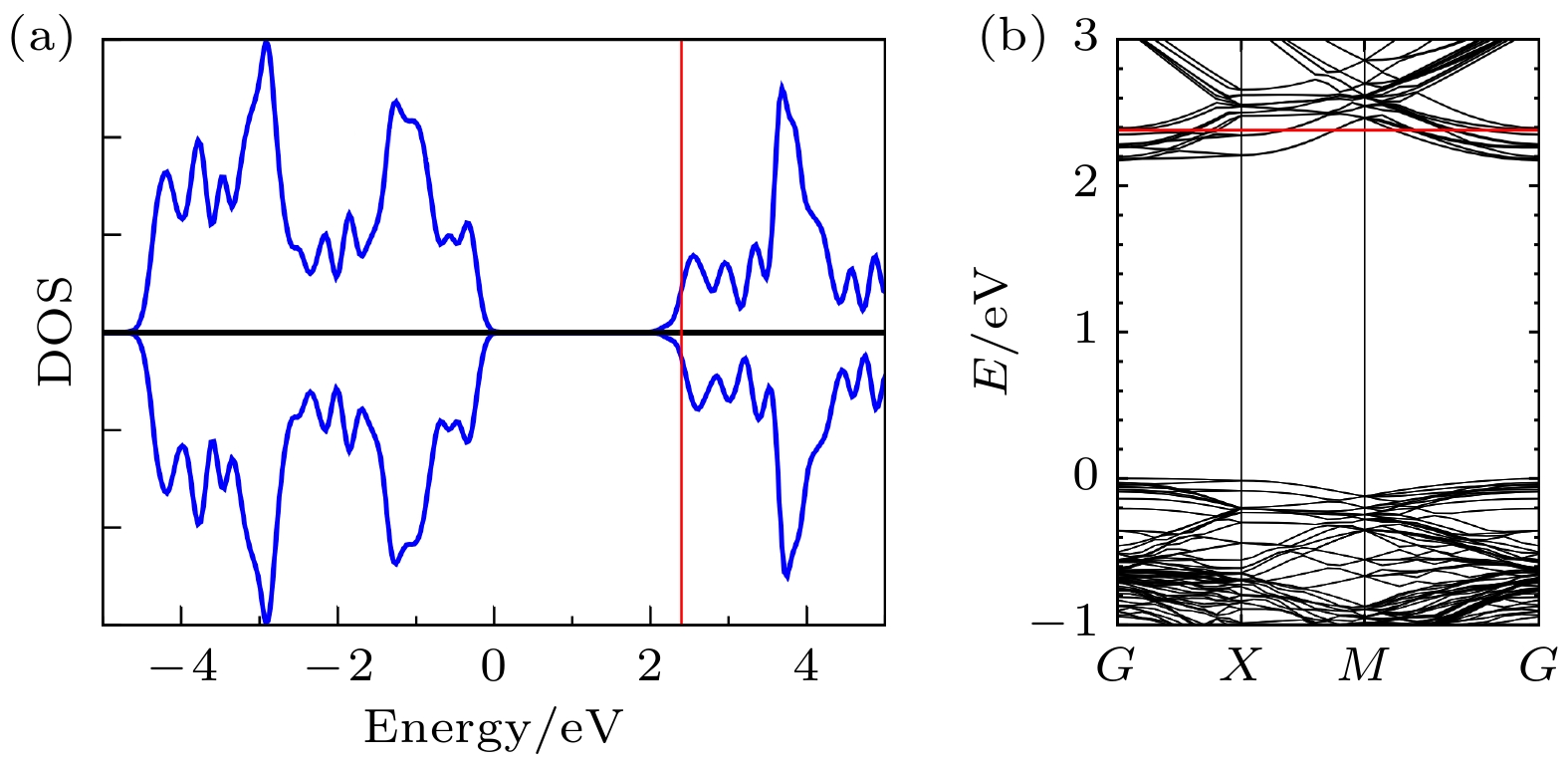-
Electronic properties in δ-doped La:SrTiO3 superlattices varying with the doping dimensionality and concentration are systematically studied through using first-principles calculation. The superlattices consist of periodically repeated La-doped single SrTiO3 layers in SrTiO3 film, and the doping dimensionality can be tuned by varying the space of the neighboring doped layers. At 25% doping concentration, the spacing between SrTiO3 layers increases from 1 unit-cell layer to 5 unit-cell layers, i.e. the doping dimensionality changes three dimensions to two dimensions, the superlattice charater changes from metallic character into insulating character, and the charge sequence, spin sequence and orbital sequence are present in a localized state. This metal-insulator transition is ascribed to the stronger correlation effect in the two-dimensional electron system. With the two-dimensional doping concentration increasing to 50%, the correlation effect becomes weak and the system becomes metallic.
[1] Imada M, Fujimori A, Tokura Y 1998 Rev. Mod. Phys. 70 1039
 Google Scholar
Google Scholar
[2] Dagotto E 2005 Science 309 257
 Google Scholar
Google Scholar
[3] Tokura Y, Nagaosa N 2000 Science 288 462
 Google Scholar
Google Scholar
[4] Ahn C H, Triscone J M, Mannhart J 2003 Nature 424 1015
 Google Scholar
Google Scholar
[5] Mannhart J, Schlom D G 2010 Science 327 1607
 Google Scholar
Google Scholar
[6] Camjayi A, Haule K, Dobrosavljević V, Kotliar G 2008 Nat. Phys. 4 932
 Google Scholar
Google Scholar
[7] Boris A V, Matiks Y, Benckiser E, et al. 2011 Science 332 937
 Google Scholar
Google Scholar
[8] Ohtomo A, Muller D A, Grazul J L, et al. 2002 Nature 419 378
 Google Scholar
Google Scholar
[9] Ohtomo A, Hwang H Y 2004 Nature 427 423
 Google Scholar
Google Scholar
[10] Reyren N, Thiel S, Caviglia A D, et al. 2007 Science 317 1196
 Google Scholar
Google Scholar
[11] Caviglia A D, Gariglio S, Reyren N, et al. 2008 Nature 456 624
 Google Scholar
Google Scholar
[12] Li L, Richter C, Mannhart J, Ashoori R C 2011 Nat. Phys. 7 762
 Google Scholar
Google Scholar
[13] Brinkman A, Huijben M, Van Zalk M, et al. 2007 Nat. Mater. 6 493
 Google Scholar
Google Scholar
[14] Ariando, Wang X, Baskaran G, et al. 2011 Nat. Commun. 2 188
 Google Scholar
Google Scholar
[15] Wang Z, Okude M, Saito M, et al. 2010 Nat. Commum. 1 106
 Google Scholar
Google Scholar
[16] Choi W S, Lee S, Cooper V R, et al. 2012 Nano Lett. 12 4590
 Google Scholar
Google Scholar
[17] Kornblum L 2019 Adv. Mater. Interfaces 6 1900480
 Google Scholar
Google Scholar
[18] Niu W, Wang X F, Xu Y B, Zhang R 2021 ACS Appl. Electron. Mater. 3 128
 Google Scholar
Google Scholar
[19] Mardegan J R L, Christensen D V, Chen Y Z, et al. 2019 Phys. Rev. B 99 134423
 Google Scholar
Google Scholar
[20] Song Q, Yu T L, Lou X, et al. 2019 Nat. Commum. 10 758
 Google Scholar
Google Scholar
[21] Chen J K, Mao W, Gao L, et al. 2019 Adv. Mater. 32 1905060
 Google Scholar
Google Scholar
[22] Kresse G, Furthmüller J 1996 Phys. Rev. B 54 11169
 Google Scholar
Google Scholar
[23] Perdew J P, Burke K, Ernzerhof M 1996 Phys. Rev. Lett. 77 3865
 Google Scholar
Google Scholar
[24] Blöchl P E 1994 Phys. Rev. B 50 17953
 Google Scholar
Google Scholar
[25] Kresse G, Joubert D 1999 Phys. Rev. B 59 1758
 Google Scholar
Google Scholar
[26] Dudarev S L, Botton G A, Savrasov S Y, et al. 1998 Phys. Rev. B 57 1505
 Google Scholar
Google Scholar
[27] Tokura Y, Taguchi Y, Okada Y, Fujishima Y, Iye Y 1993 Phys. Rev. Lett. 70 2126
 Google Scholar
Google Scholar
[28] Okuda T, Nakanishi K, Miyasaka S, Tokura Y 2001 Phys. Rev. B 63 113104
 Google Scholar
Google Scholar
[29] Bruus H, Flensberg K 2004 Many-body Quantum Theory in Condensed Matter Physics - An Introduction (New York: Oxford University Press) p41
-
图 1 (a) 超晶格结构面内4 × 4周期俯视图; (b) [SLTO]1|[STO]1侧视图; (c) [SLTO]1|[STO]5侧视图. 绿色球代表Sr原子, 蓝色代表La原子, 红色代表O原子, Ti原子在八面体中心
Figure 1. (a) Top view of the superlattices with in-plane 4 × 4 unit cells; (b) side view of [SLTO]1|[STO]1; (c) side view of [SLTO]1|[STO]5. Green balls represent Sr atom, blue balls La atom, red balls O atom, Ti atoms are at the centre of the octahedrons.
图 2 分自旋总态密度图和能带图 (a1), (a2) U = 2 eV, [SLTO]1|[STO]1; (b1), (b2) U = 2 eV, [SLTO]1|[STO]5; (c1), (c2) U = 3.7 eV, [SLTO]1|[STO]1; (d1), (d2) U = 3.7 eV, [SLTO]1|[STO]5, 红色箭头所指为带隙内局域态. 图中红线为费米能级, 价带顶部设为能量零点. 态密度图中水平线上部为上自旋态密度, 下部为下自旋态密度
Figure 2. Spin-polarized total densities of states and band structures: (a1), (a2) U = 2 eV, [SLTO]1|[STO]1; (b1), (b2) U = 2 eV, [SLTO]1|[STO]5; (c1), (c2) U = 3.7 eV, [SLTO]1|[STO]1; (d1), (d2) U = 3.7 eV, [SLTO]1|[STO]5, the in-gap localized states are pointed out by the red arrow. The red lines are Fermi level, the top of valence band is set to be zero.
图 3 (a) [SLTO]1|[STO]5能带结构图, 其中带隙内局域态为Ti dxz和dyz轨道态. 水平红色虚线为费米能级; (b) [SLTO]1|[STO]5带隙内局域态电荷空间分布, 局域态为Ti dxz和dyz轨道态, 上下箭头代表自旋方向; (c)掺杂层局部结构和Ti3+O6八面体键长, 沿着y和z方向Ti3+—O键较长
Figure 3. (a) Band structure of [SLTO]1|[STO]5, in which the in-gap states mainly consist of Ti dxz and dyz orbitals; (b) charge distribution of the in-gap states, the charge is mainly localized at Ti dxz and dyz orbitals. The arrows represent spin directions; (c) local structure of the doped layer and bond lengths of Ti3+—O bonds of the Ti3+O6 octehedron.
图 4 掺杂离子层的电势V和掺杂电荷ρ分布示意图 (a) [SLTO]1|[STO]1, 虚线代表单个掺杂层阳离子产生的吸引势, 实线代表相邻掺杂层阳离子吸引势叠加后总的吸引; (b) [SLTO]1|[STO]5
Figure 4. Diagrams of electric potential V and charge distribution: (a) [SLTO]1|[STO]1, dashed lines present the potential produced by a single impurity layer, the solid lines present the total potential of all impurity layers; (b) [SLTO]1|[STO]5.
-
[1] Imada M, Fujimori A, Tokura Y 1998 Rev. Mod. Phys. 70 1039
 Google Scholar
Google Scholar
[2] Dagotto E 2005 Science 309 257
 Google Scholar
Google Scholar
[3] Tokura Y, Nagaosa N 2000 Science 288 462
 Google Scholar
Google Scholar
[4] Ahn C H, Triscone J M, Mannhart J 2003 Nature 424 1015
 Google Scholar
Google Scholar
[5] Mannhart J, Schlom D G 2010 Science 327 1607
 Google Scholar
Google Scholar
[6] Camjayi A, Haule K, Dobrosavljević V, Kotliar G 2008 Nat. Phys. 4 932
 Google Scholar
Google Scholar
[7] Boris A V, Matiks Y, Benckiser E, et al. 2011 Science 332 937
 Google Scholar
Google Scholar
[8] Ohtomo A, Muller D A, Grazul J L, et al. 2002 Nature 419 378
 Google Scholar
Google Scholar
[9] Ohtomo A, Hwang H Y 2004 Nature 427 423
 Google Scholar
Google Scholar
[10] Reyren N, Thiel S, Caviglia A D, et al. 2007 Science 317 1196
 Google Scholar
Google Scholar
[11] Caviglia A D, Gariglio S, Reyren N, et al. 2008 Nature 456 624
 Google Scholar
Google Scholar
[12] Li L, Richter C, Mannhart J, Ashoori R C 2011 Nat. Phys. 7 762
 Google Scholar
Google Scholar
[13] Brinkman A, Huijben M, Van Zalk M, et al. 2007 Nat. Mater. 6 493
 Google Scholar
Google Scholar
[14] Ariando, Wang X, Baskaran G, et al. 2011 Nat. Commun. 2 188
 Google Scholar
Google Scholar
[15] Wang Z, Okude M, Saito M, et al. 2010 Nat. Commum. 1 106
 Google Scholar
Google Scholar
[16] Choi W S, Lee S, Cooper V R, et al. 2012 Nano Lett. 12 4590
 Google Scholar
Google Scholar
[17] Kornblum L 2019 Adv. Mater. Interfaces 6 1900480
 Google Scholar
Google Scholar
[18] Niu W, Wang X F, Xu Y B, Zhang R 2021 ACS Appl. Electron. Mater. 3 128
 Google Scholar
Google Scholar
[19] Mardegan J R L, Christensen D V, Chen Y Z, et al. 2019 Phys. Rev. B 99 134423
 Google Scholar
Google Scholar
[20] Song Q, Yu T L, Lou X, et al. 2019 Nat. Commum. 10 758
 Google Scholar
Google Scholar
[21] Chen J K, Mao W, Gao L, et al. 2019 Adv. Mater. 32 1905060
 Google Scholar
Google Scholar
[22] Kresse G, Furthmüller J 1996 Phys. Rev. B 54 11169
 Google Scholar
Google Scholar
[23] Perdew J P, Burke K, Ernzerhof M 1996 Phys. Rev. Lett. 77 3865
 Google Scholar
Google Scholar
[24] Blöchl P E 1994 Phys. Rev. B 50 17953
 Google Scholar
Google Scholar
[25] Kresse G, Joubert D 1999 Phys. Rev. B 59 1758
 Google Scholar
Google Scholar
[26] Dudarev S L, Botton G A, Savrasov S Y, et al. 1998 Phys. Rev. B 57 1505
 Google Scholar
Google Scholar
[27] Tokura Y, Taguchi Y, Okada Y, Fujishima Y, Iye Y 1993 Phys. Rev. Lett. 70 2126
 Google Scholar
Google Scholar
[28] Okuda T, Nakanishi K, Miyasaka S, Tokura Y 2001 Phys. Rev. B 63 113104
 Google Scholar
Google Scholar
[29] Bruus H, Flensberg K 2004 Many-body Quantum Theory in Condensed Matter Physics - An Introduction (New York: Oxford University Press) p41
Catalog
Metrics
- Abstract views: 6078
- PDF Downloads: 87
- Cited By: 0















 DownLoad:
DownLoad:




